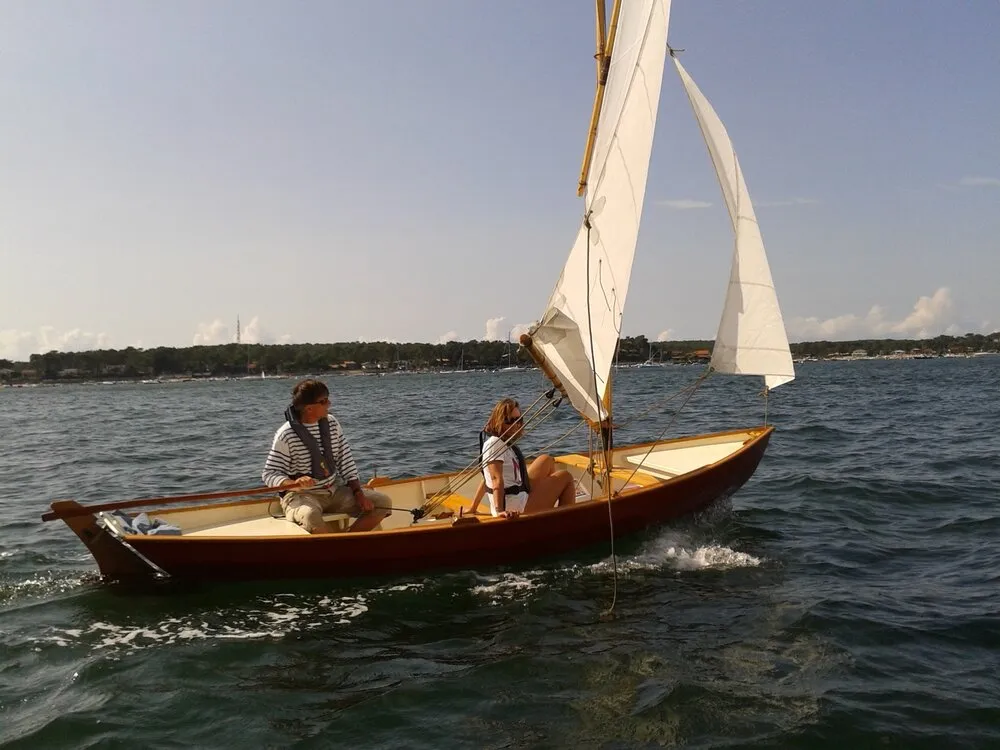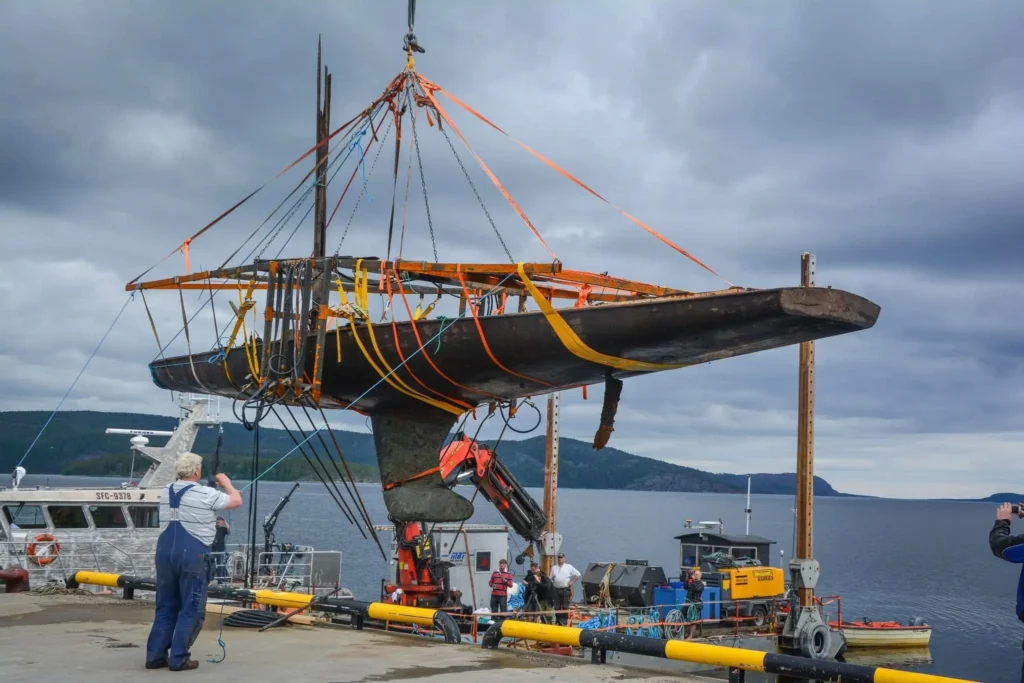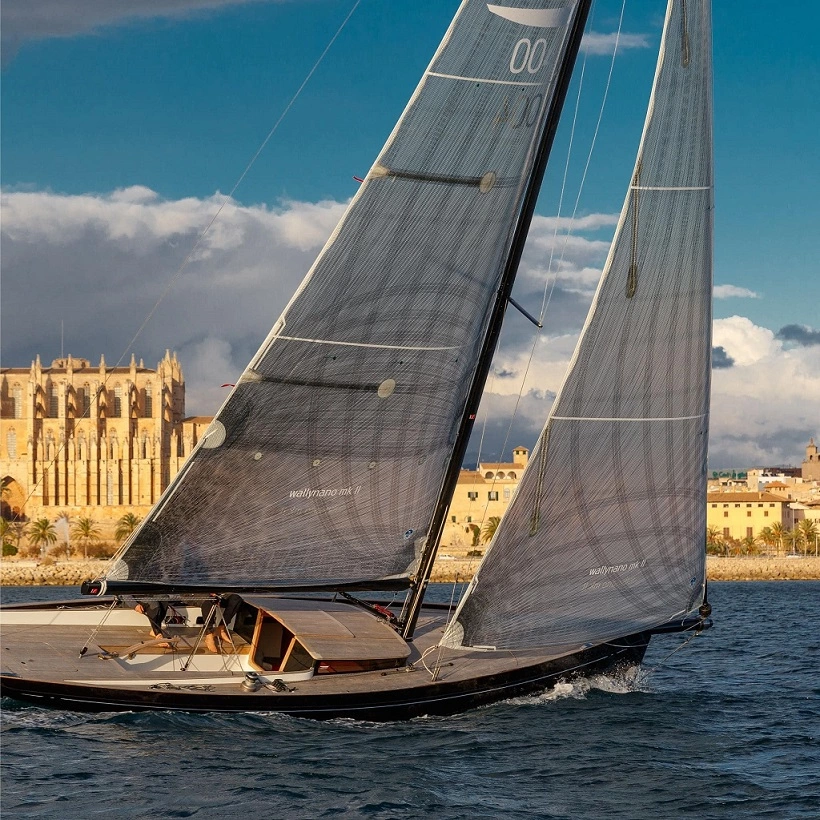
We are one of the best Sailing Boat Manufacturers in Turkey. Check our website for more info about Classic sailing yachts, wooden sailing boats, new and vintage yachts, and luxury yachts for sale
We manufacture our sailing boats, rowing boats, and motor boats in our manufacturing hall in Istanbul, Turkey. In the beginning, we will give some brief information about the material that we use for sailing boats, yachts and motor boats building
Materials used by the Sailing Boat Manufacturers
The traditional material for spars (masts, booms, and spinnaker poles) was wood; different types of wood were used: Sitka spruce, douglas fir, and Oregon pine. The construction procedure was very complex, especially in the case of high masts, when it become necessary to assemble and work many parts.
This activity is still in progress in some shipyards specializing in the restoration of classic sailing yachts. As an example, for a 25 meters yacht, up to 4 groups of planks in length times 10 in breadth are
necessary to re-build the mast. During the 1960s wood was eclipsed by aluminum due to its greater durability, higher specific properties, and lower cost.
Aluminum alloys, generally 6000 series, are commonly utilized, with magnesium and silicium that give to the material high mechanic characteristics and good resistance to corrosion in the marine environment. For short, economical masts, 6063 alloys are used, 6061 type for high-quality masts, and 6082 type, which is the most expensive one, for racing yacht masts.
An imperative requirement for a mast section is to provide adequate inertia with minimum dimensions in order to assure good buckling resistance and low interference with the mainsail. Mast profiles are obtained by extrusion in a wide variety of section shapes, with longitudinal inertia Jyy much greater than the transverse one Jxx. Some of them, as examples, are listed below (see in Figure 11). z oval sections, used for small-medium size cruising yachts without particular performance requirements.
Details used by the Sailing Boat Manufacturers

The ratio between the two diameters is about 1.5 while the ratio JYY/JXX ranges between 1.8 and 1.9. z bullet sections (or “D” sections) are employed for high-efficiency rigs. The ratio between the two diameters is about 1.6÷1.9 and the JYY /JXX ratio for these types ranges from 2.5 up to 3. z open sections are used when a mainsail reefing system is to be set up. The ratio between the two diameters is about 1.8÷2.0 while the JYY /JXX ratio ranges between 2.5 and 2.8.
Most parts of aluminum masts have a constant section along its length; in the case of big and/or high-performance yachts, it is a common practice to reinforce the mast base and to taper the top. The first action is performed by bolting aluminum strips inside the fore and aft part of the section to increase longitudinal inertia; the more effective alternative consists in introducing a sleeve inside the mast and bolting or riveting them together.
The same method is employed to create masts longer than 18 meters jointing two profiles. In this case, a coupling profile is introduced in the mast for two-three diameters in length and the two parts are bolted together.
The top of the mast is tapered cutting a strip of material from the side of the profile of increasing width. Then the two edges are welded together obtaining a decreasing section towards the masthead. This simple procedure allows a reduction in weight and makes the top of the mast more flexible. Carbon masts began to be used in the early 1980s, initially in racing dinghies, and then America’s Cup and Admirals Cup yachts.
In two decades since their first use carbon fibers are not as widely used as one might think; in fact, they are only considered when weight is critical and are therefore limited to racing yachts or performance-oriented
cruising yachts. This is an area that has evolved greatly in recent years, as innovative materials and designs have been explored. Monolithic and sandwich structures have been used.
Composite Masts

Dimensioning of composite masts is complex and requires analysis of global and local buckling, aerodynamic considerations, and evaluation of the strength reduction due to many attachments and geometrical variations. High modulus carbon fibers including M55 and Pitch have been used but the most popular choices are intermediate modulus fibers such as M46 for racing yachts or standard modulus fibers such as T300 for cruising yachts. Software now exists to assist in material selection, as an example, SIMSPAR code (Pallu, 2008).
Carbon masts consist of mainly longitudinal unidirectional fibers (over 80%) with some at ±45° and 90°, in an epoxy resin matrix. Most composite masts are manufactured in two-half shells with the primary shell reinforced with local buildups at hardware attachment points. Preimpregnated fibers are laid up by hand in a female mold and cured at 120°C in an oven or autoclave. The two parts are then bonded together. An alternative fabrication process involving the braiding of fibers around a mandrel produces a single-part mast.
A large number of finishing operations are then required, including the machining of holes to fix the mainsail track, rigging attachments, and spreader features. Note that the two-part masts must also require detailed attachment work in addition to the work involved in the bonding of the two sections. Therefore a carbon mast can be built with increased strength in the direction of the principal loads.
The Optimum Sail Shape
For optimum sail shape the bend of the mast is very important, as the bend, along with other factors, directly contributes to the sail’s draft depth. As the vessel becomes overpowered greater mast bend flattens the sail, and since a carbon mast can be manufactured with the precisely controlled orientation of fibers it is possible to create a mast that has the correct bending characteristics. Additionally, the inherently easier shape tailoring of a laminated structure provides for optimized aerodynamic or structural shaping throughout the length.
This is an important advance in technology, complement this with new sail technology and they form a superior aerodynamic shape that could never be achieved with an aluminum mast and polyester sails. A review of carbon mast construction is presented in Hall, 2002. A top example of this technology is represented by the mast of Mirabella V, the largest sloop in the world. Her carbon epoxy mast is 100 meters long, with five sets of spreaders, a section of 1600 mm in the longitudinal plane, and a maximum thickness at the step of 40 mm.
For America’s Cup boat masts, high-strength intermediate-modulus type carbon fiber (Fibre Modulus=295GPa, Tensile Strength=4400MPa) is used in accordance with the appropriate property limits of America’s Cup Rules. As an example, the mast for the Nippon Challenger 1995 was formed in two pieces, the front side, and back side, then bonded into a unique piece (Figure 12). The 2000 challenger mast was built by an integral molding with a female mold and a pressure bag.
This method requires a very high strength of the mold as good quality can be attained just by applying high pressure by a vacuum bag; it was very effective and it does not need any auto-clave or assembly procedure. The female mold was built from aluminum alloy with a similar technology of the aluminum mast building.
Further developments in masts could come from the use of new matrix materials and new fibers, such as PBO (para-phenylene-benzobisoxazole), which could be used to increase the properties of the mast. Standing rigging, traditionally in ropes from natural fibers such as hemp, manila, or
sisal, is today generally in steel wire rope (1×19) on small yachts. For racing yachts and superyachts, Nitronic 50 stainless steel is being replaced by high-performance synthetic fibers, notably PBO and aramid.
The use of continuous fiber slings results in lighter cables. Carbon fiber rigging is also under development. For running rigging polyester is the standard choice, more expensive fibers such as HMPE (Dyneema), aramid, or Vectran are used for halyards
